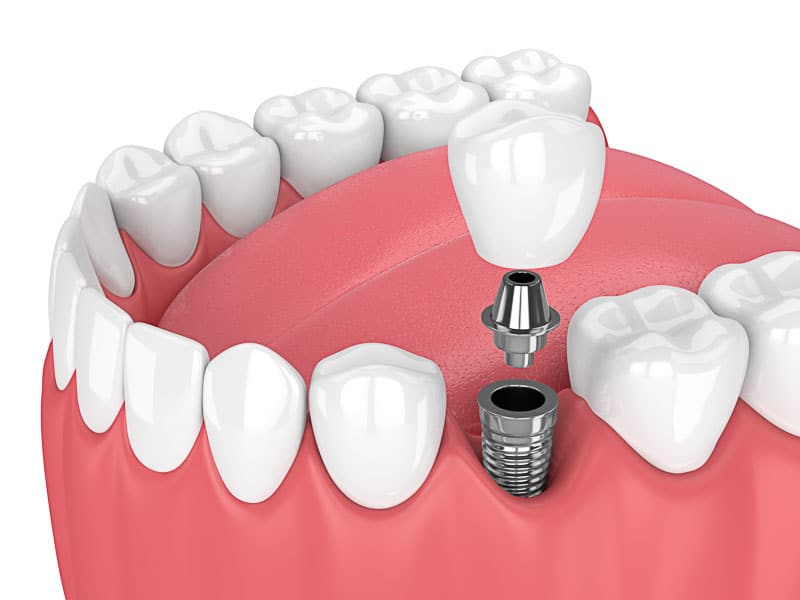A Long-Lasting Way to Restore Teeth
What is a dental implant?
A dental implant is a titanium-based prosthesis that we use in order to replace missing teeth.

What are the advantages of dental implants?
The main advantage of dental implants is that they can replace missing teeth without affecting the neighboring teeth. For example, if you are missing a single tooth, one option could be to drill the teeth in front and behind the space, and place a three-unit bridge (that is cemented in place). Another option would be to have a removable denture or flipper-type device that replaces the missing tooth, that you take in and out at night.
A second important advantage of implants is that unlike real teeth, implants do not get decay. Thus, when you are faced with a decision to have a root canal, post and crown or have a dental implant, the implant is often a better option because the implant will almost always last longer
How do dental implants work? What are the parts?
A dental implant is made up of three parts: the first part is the implant itself which is surgically placed in the bone (in the office). The second part is the abutment – the part that connects the implant to the implant crown. The third and final part is the implant crown. It functions as would a crown on one of your natural teeth — and in this case it connects to the abutment which connects to the implant itself.
How long does it take to have an implant placed?
The procedure to have an implant placed can often take less than 30 minutes. However, the time to go from start to finish — implant placement to completed crown – is usually in the 3-9 month range because of the time is takes for the implant to osseointegrate (fuse with the bone). If the amount of bone for placing the implant was limited, and a bone graft was placed, it may take a few months more because the bone graft has to heal in place as well.
What if I need more than one implant?
One of the great things about dental implants is that they can be used as a replacement for a missing tooth or teeth, and can also be used to replace an entire arch of teeth! For example, one of the most common and beneficial uses of dental implants is as an implant denture— a denture that’s held in with implants. Many patients who wear lower dentures struggle because of the way the lower jaw loses bone, and a traditional denture that’s supported in part with dental implants can provide a world of difference for eating, smiling, and feeling confident in public again!